Judaism
About Andrew Cusack
 Writer, web designer, etc.; born in New York; educated in Argentina, Scotland, and South Africa; now based in London.
Writer, web designer, etc.; born in New York; educated in Argentina, Scotland, and South Africa; now based in London. read more
News
Blogs
Reviews & Periodicals
Arts & Design
World
France
Mitteleuropa
Knickerbockers
Argentina
The Levant
Africa
Cape of Good Hope
Netherlands
Scandinavia
Québec
India
Muscovy
Germany
Academica
The Other Modern in Jewish Amsterdam
Jacobus Baars’ Synagoge Oost, Linnaeus Street
There were few places where architecture’s competing forms of modernism overlapped more than the Netherlands in the 1920s. Traditionalists like Kropholler, De Stijl’s Oud, Rationalists like van der Vlugt and Duiker, and the versatile Dudok built alongside the work of the capital’s eponymous ‘Amsterdam school’ style.
The influence of the great Dutch architect Pierre Cuypers — Holland’s Pugin — might be inferred as the progenitors of the Amsterdam school (De Klerk, van der Mey, and Kramer) all studied or worked in the firm of Cuypers’ nephew Eduard.
The Dutch capital’s take on the brick expressionism originated among its Hanseatic neighbours but was sufficiently distinct to merit its own name. Architect Jacobus Baars (1886-1956) deployed the style to great effect in the work he did for Amsterdam’s then-flourishing Jewish community.
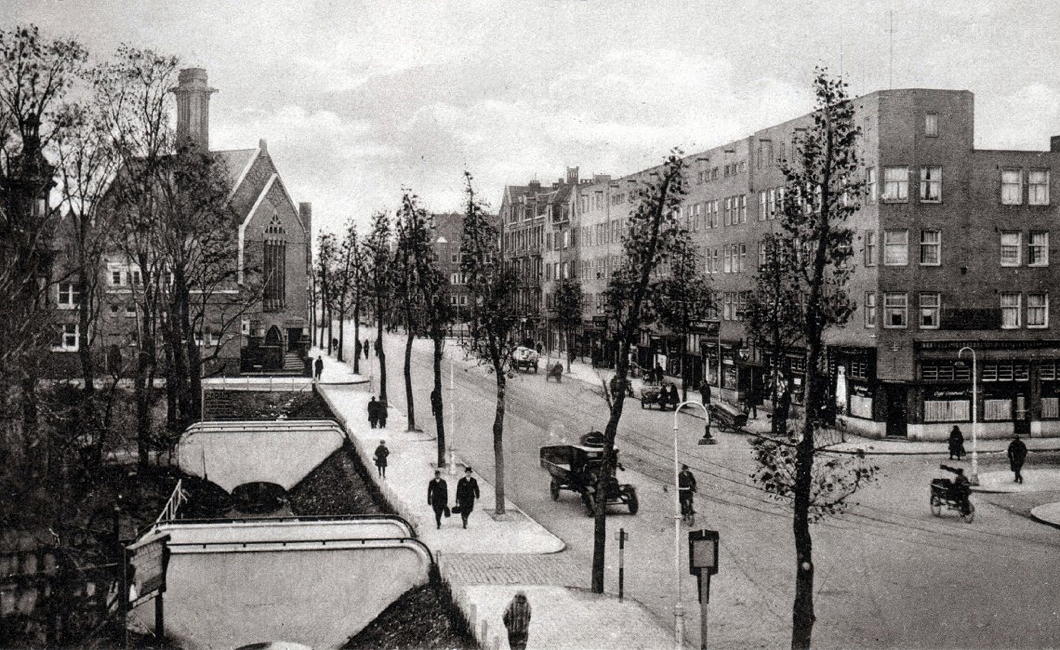
Baars designed the 1928 Synagoge Oost (East Synagogue) on Linnaeusstraat (Linnaeus Street) in the Transvaalbuurt neighbourhood that was developed in the first decades of the twentieth century.
Dutch sympathies in the then-still-recent Anglo-Boer War are obvious from the naming of local streets and squares (and, indeed, the district) after Afrikaner places, battles, and statesmen.
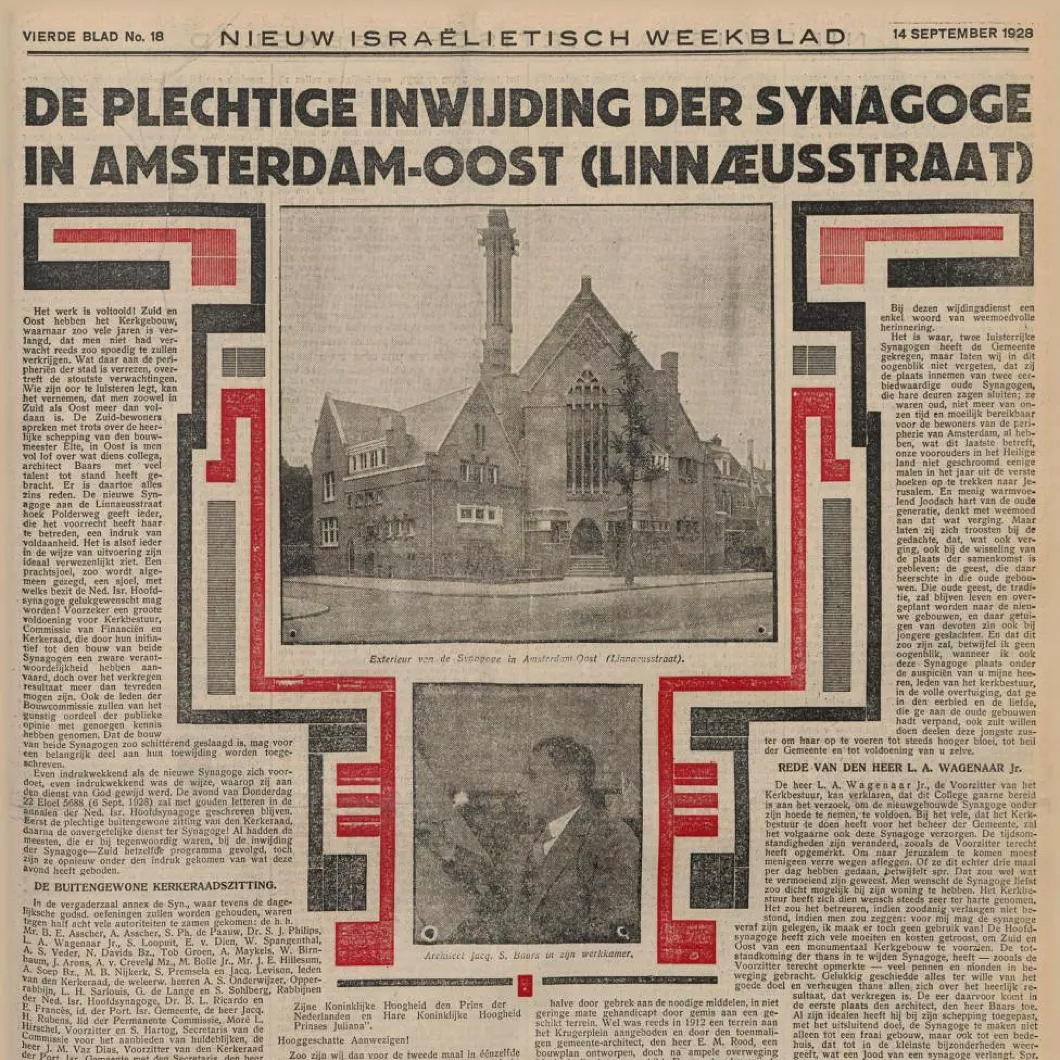
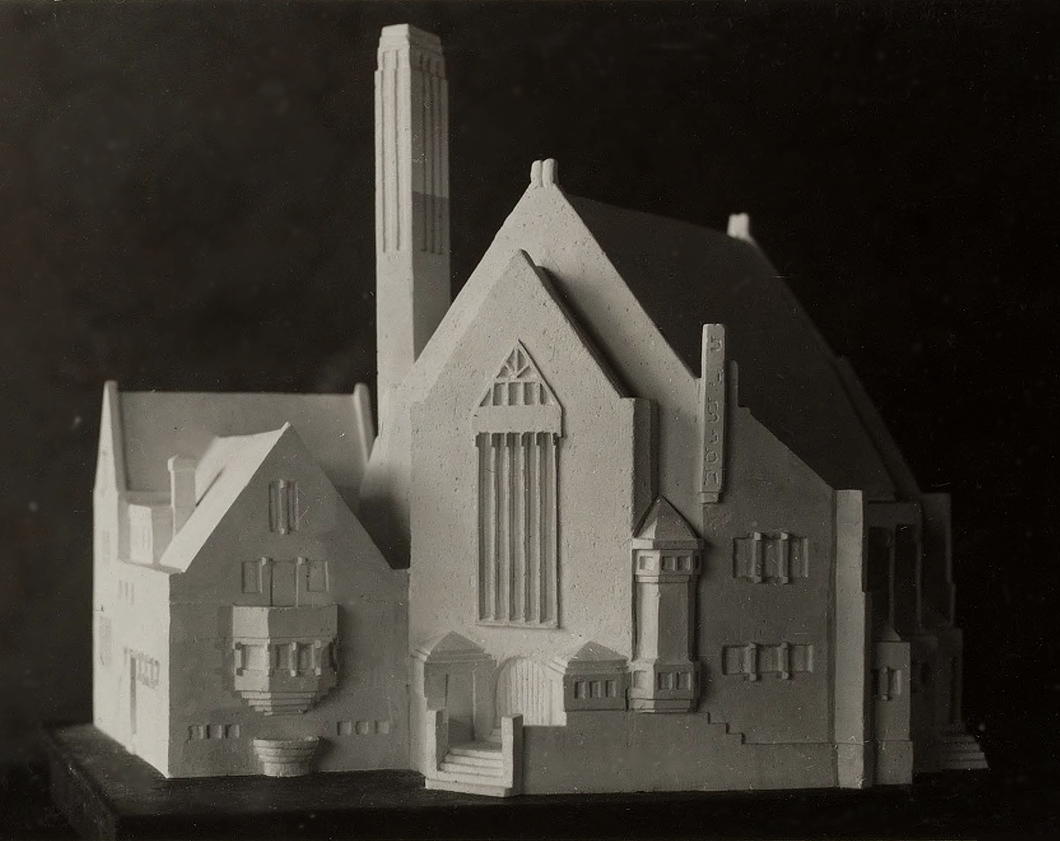
The architect placed the building at an angle so that the entrance could face on to Linnaeusstraat while the holy ark containing the Torah scrolls faced Jerusalem, skilfully filling in the rest of the site with clergy and school structures ancillary to the sanctuary and congregation. (more…)
The Borough Synagogue
AS THE MOST ANCIENT of boroughs — and right across the bridge from the City of London itself — Southwark is presumed to have had at least a small Jewish community before the Edict of Expulsion in 1290. Records show the existence of a merchant and moneylender named ‘Isaac of Southwark’ who defended fellow Jews before the Exchequer of the Jews, the special court that dealt with Jewish taxes, fines, and legal cases.
Before 1290, it seems likely any Jews in the Borough would have crossed London Bridge to worship in the Great Synagogue in Old Jewry. After the Edict was rescinded in the seventeenth century, Jewish communities sprang up slowly. Pepys in his diary records a visit to the small Sephardic synagogue in Creechurch Lane in 1663, and by 1690 a new Great Synagogue had opened in the City for Ashkenazi Jews.
Jews in the Borough had their first known place of worship thanks to Mr Nathan Henry (born c. 1764). As a boy, Henry heard the mad Lord George Gordon speak in St George’s Fields (where your humble and obedient scribe is currently situated typing this) which provoked the anti-Catholic Gordon Riots. By a strange twist of fate, that Scottish nobleman ended up converting to Judaism and died in Newgate Prison styling himself Yisrael bar Avraham.
Around 1799, Nathan Henry fitted out a room as a synagogue in his house at No. 2, Market Street near the junction with Newington Causeway. (Market Street was later renamed Dantzic Street after the Baltic city, and is now Keyworth Street after a First World War winner of the Victoria Cross.) Later he roofed over the whole of the yard behind the house with entry gained through the shop at the front, and two rows of gallery seating above for ladies (entered through a bedroom).
Henry’s house-synagogue was small and crowded: it could fit a hundred people in uncomfortable circumstances, but those hundred were not always happy. The proprietor, having built the synagogue, considered himself the sole authority with the right to appoint wardens and office-holders. In 1823 a group of worshippers seceded and found new premises in which to worship in Prospect Place, the south side of what is now St George’s Road. The two synagogues continued in friendly relations and Nathan Henry was largely considered the head of the Jews of the Borough until his death in 1853, after which his house-synagogue shut up shop.
But by the 1860s the need for a new place of worship was apparent. For one thing, the lease on Prospect Place was coming up, and as Rabbi Rosenbaum put it the building was “incommodious, dilapidated, and unsightly, and was not even protection against inclement weather, for the roof admitted the rain and the raising of umbrellas during divine worship was no unusual occurrence”.
A building committee was put together, funds raised (more slowly than anticipated), and a site found in Albion Place, Walworth — soon to become Heygate Street. On 7 April 1867, the Borough New Synagogue was consecrated in a ceremony attended by almost all the Jewish clergy of London. In the evening, many of the congregation repaired to Radley’s Hotel in Bridge Street for a great big hooley to celebrate. The synagogue was accompanied by a boys’ school and a girls’ school both located next door. (more…)
The threat to Bevis Marks
The Spanish & Portuguese synagogue at Bevis Marks in the City of London is well worth a visit. The last time my parents were in town we went for a tour given by an ebullient guide who was a big fan of Ben Disraeli and who taught us the story of the congregation and the building.
In Apollo magazine, Sharman Kadish has written a good summary of the ongoing threat to Bevis Marks from proposed overbearing office developments. (Dr Kadish also wrote a 2004 article on “The ‘Cathedral Synagogues’ of England” in Jewish Historical Studies.)
One planning application which would have almost completely cut off the synagogue’s natural light has been rejected but others loom on the horizon, one recommended for approval by the City’s planning czars.
London blog ‘Ian Visits’ visited Bevis Marks in 2019.
The synagogue is now temporarily closed to visitors for renovations but shabbat services continue to take place. Visiting information otherwise can be found on the congregation’s website.
Incidentally — given that November is the month of the dead — the name carved above the entrance of the synagogue is Kahal Kadosh Sha’ar ha-Shamayim, or ‘Holy Congregation of the Gates of Heaven’ which mirrors the Catholic cemetery where two of my grandparents are buried. (more…)
Nahum Effendi and Cairo’s Lost World
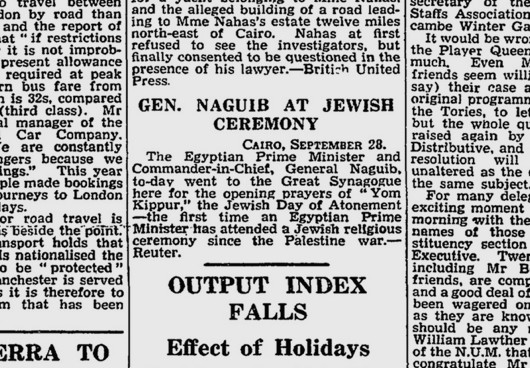
Stumbling across the newspaper clipping above was a sad reminder of a lost world. Taken from the front page of the Manchester Guardian of Monday 29 September 1952, it describes the Egyptian leader General Naguib attending a Yom Kippur service just two months after the coup that overthrew the country’s monarchy. None of the Jewish places of worship in Cairo are known as the “Great Synagogue”, so I presume this must have been the Adly Street Synagogue (Sha’ar Hashamayim).
The Chief Rabbi of the Sephardic community in Egypt at the time would have been Senator Rabbi Chaim Nahum Effendi. A creature of the Ottoman world, Rabbi Nahum was born in Smyrna in Anatolia, went to yeshiva in Tiberias on the Sea of Galilee, and finished his secondary education in a French lycée.
After earning a degree in Islamic law in Constantinople, he started his rabbinic studies in Paris while also studying at the Sorbonne’s School of Oriental Languages. Returning to Anatolia he was appointed the Hakham Bashi, or Chief Rabbi, of the Ottoman empire in 1908 and honoured with the title of effendi.
After that empire collapsed, Rabbi Nahum was invited to take up the helm of the Sephardic community in Egypt in 1923. A natural linguist and a gifted scholar, the chief rabbi’s talents were apparent to all, and he was appointed to the Egyptian senate as well as being a founding member of the Royal Academy of the Arabic Language created to standardise Egyptian Arabic.
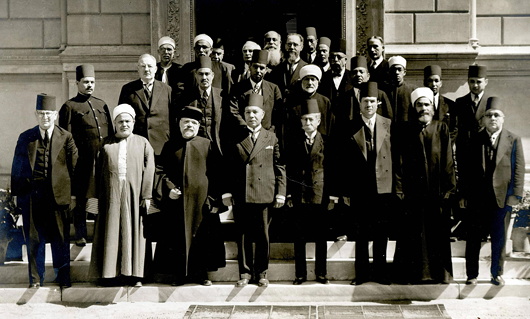
Rabbi Nahum (front row, third from left) at the foundation of Egypt’s Arabic academy.
The foundation of the State of Israel was a godsend for many Jews but spelled the beginning of the end for Egypt’s community. Zionists were a distinct minority among Egyptian Jews — many of whom were part of Egypt’s (primarily anti-British) nationalist movement — but Israel’s defeat of the Arab League in the 1948 War embarrassed Egypt’s ruling classes and stoked anti-semitism amongst the populace. Violent attacks against Jewish businesses were tolerated by the authorities and went uninvestigated by the police. Unfounded allegations of both Zionism and treason were rife, and discriminatory employment laws were introduced.
The 1952 Revolution did not improve things, as the tolerant but decaying monarchy was replaced by a vigorous but nationalist and pan-Arabist military government. Faced with such continuing depredations, the overwhelming majority of Jewish Egyptians fled — to Israel, Europe, and the United States. Rabbi Nahum eventually died in 1960, by then something of a broken man I imagine.
Cairo was once a thriving cosmopolitan city of Muslims, Christians, and Jews — and many communities of outside origin. The Greeks, who first arrived twenty-seven centuries ago and in 1940 still numbered tens of thousands, have all left. The futurist Marinetti was the most famous of the Italian Egyptians, whose numbers in the 1930s were numerous enough to warrant several branches of the Fascist party. Since the 1952 Revolution they are all gone too. Some Armenians remain, but not many. As for Jews, there are six left in Egypt.
Sic transit gloria mundi.
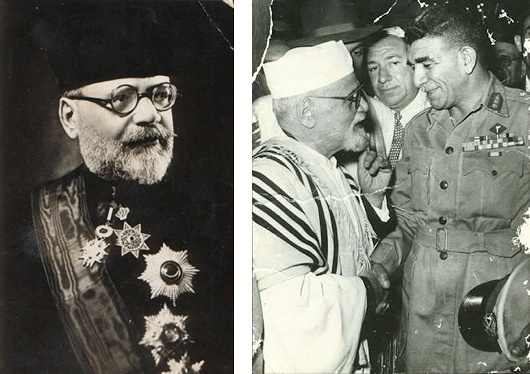
Hapsburg Hebraica
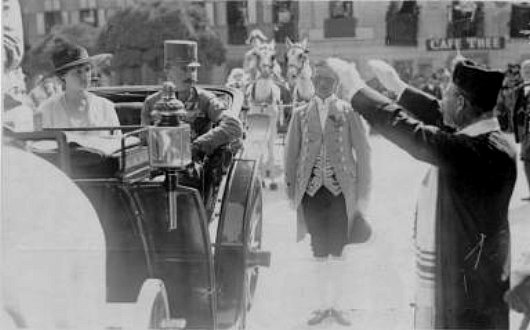
After the passing of the Hapsburg empire, which had been so protective of its Jewish subjects (especially compared to the regimes which succeeded it), numerous prominent Jews were received into the Catholic faith, perhaps having come to a full appreciation of precisely what they had lost. The subject of “Literary Jewish Converts to Christianity in Interwar Hungary” is worthy of further investigation (some graduate student should write a dissertation on just such a matter). I am no longer surprised when, in my researches, I come across yet another fascinating Hungarian Jew — be he a writer, playwright, poet, or patron — and discover, usually buried in some footnote, that he died a good Catholic.
Search
Instagram: @andcusack
Click here for my Instagram photos.Most Recent Posts
- Bicycle Rack April 29, 2024
- Burns Tower April 19, 2024
- Patrick in Parliament March 18, 2024
- Articles of Note: 13 March 2024 March 13, 2024
- Cambridge March 9, 2024
Most Recent Comments
Book Wishlist
Monthly Archives
Categories


